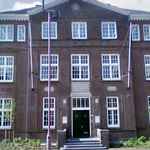Workshop Fibre Recognition
By Dr. Bas van Velzen

Course content
This course teaches recognition of fibres found in paper, by using the microscope. This knowledge can be implemented in the proper description of a paper’s fibre furnish and may generate insight into the manufacture and the condition of the paper. Furthermore, the composition of the paper can help to date it, especially when other components such as fillers and sizing are recognised. In addition, the relation between the furnish and the purpose of the paper, the paper’s typology, will be discussed.
To support findings, a methodical structure for component description will be implemented. The course includes practical instructions into digital micrography as a (permanent) record of the analysis.
Lecturer
Bas van Velzen has been lecturer in paper conservation at the master Conservation & Restoration of the University of Amsterdam since 2006. He is specialised in the materials and tools of Western paper production throughout the ages. Recently, he obtained his doctoral degree at the University of Amsterdam, with a dissertation on the typology of Western paper.
Practical information
Dates: 10-12 February 2020, 9:00-17:00.
Location: UvA Book and Paper Conservation Studio, Studio building, Hobbemastraat 22, 1071 ZC Amsterdam.
Course fee: 775,- € p.p., including a reference sample set, the course reader (digital), a certificate of participation, and coffee, tea, lunch. The workshop is exempt from VAT.
Target audience: Practicing conservators or conservation scientists
Number of participants: 6-8 participants
Registration: Please fully complete and sign the registration form below before 17 January 2020. After registration, you will receive further information about payment. Your registration is final once we have received your payment.
Further information: Ms. Indra Kneepkens via e-mail: pe-CenR@uva.nl.
Programme
10 February
1. introduction to plant fibres
- which fibres can be found in paper?
- function of these fibres in the plant
- discernable elements of fibres in relation to their position in the plant
2. how to prepare a fibre sample
- where to take a sample
- sample size
- preparing the sample
3. becoming accustomed to working with the microscope using samples of a known origin
11 February
1. introduction to polarisation microscopy and the use of a λ retarder plate (modified Herzog test)
- establishing the difference between flax and hemp fibres using the modified Herzog test
2. looking at other fibres using the modified Herzog test
- preparing and analysing samples of known fibre sources
- looking at other constituents than fibres in paper
3. what is the relation between fibre furnish and the intended use of a paper?
Evening: Drinks at Café de Wetering, Weteringstraat 37, 1017 SM Amsterdam. (Time to be determined by participants and lecturer)
12 February
1. looking at unknown fibre sources using the modified Herzog test
- preparing and analysing samples of unknown fibre sources
- staining fibre samples to enhance contrast
- staining fibre samples to know its chemical make-up
2. how to use photoshop in making z-stacked micrographs
3. We will conclude the third day with an examination of five unknown paper samples. Participants will investigate their composition and give a correct description.
